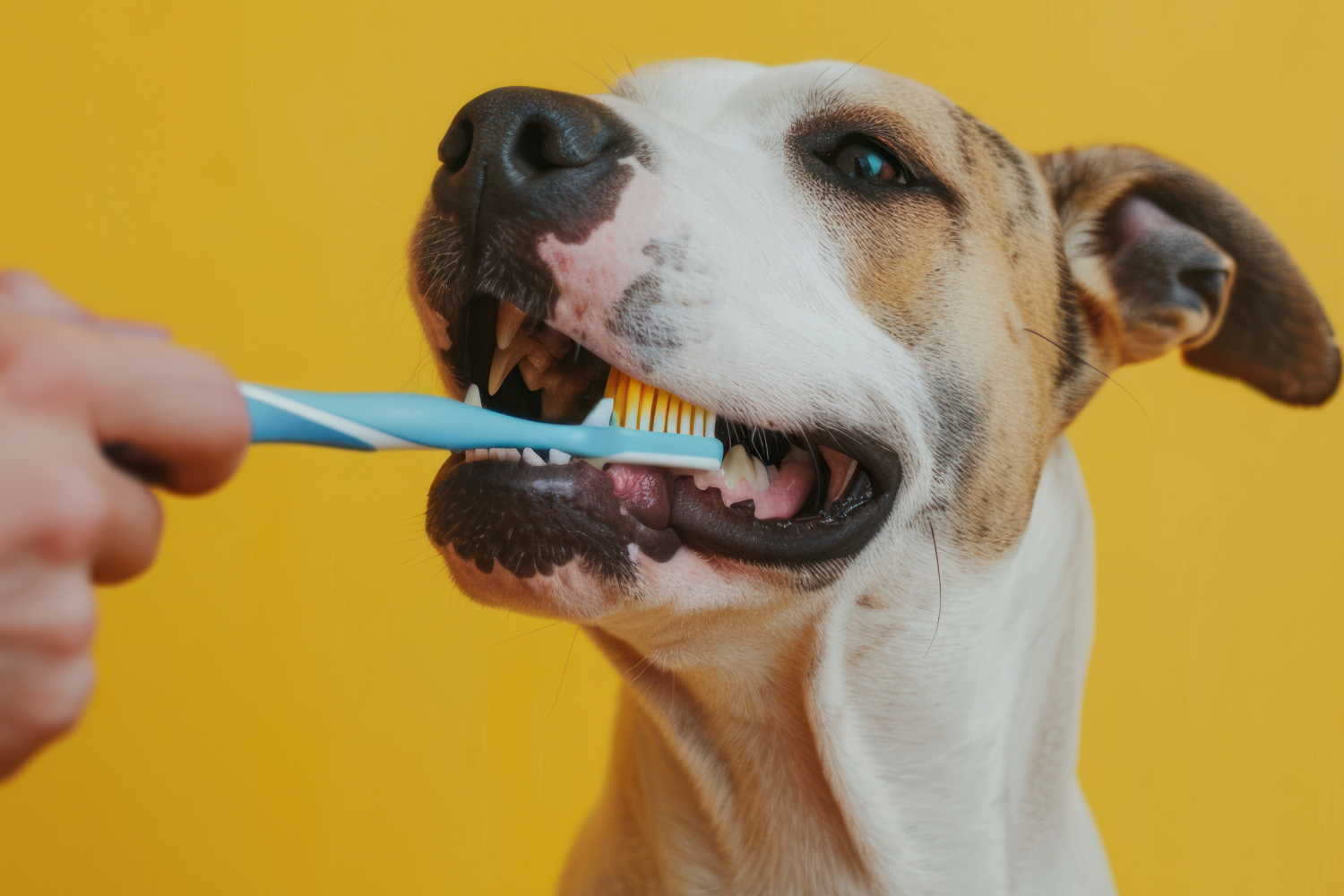
Joseph Roetheli, PhD

Highlights:
Taking care of your dog’s teeth at home is important and involves brushing their teeth each day.
Human toothpaste isn’t safe for dogs because it is not meant to be swallowed.
Using a dog-safe toothpaste and offering dental-supportive Yummy Combs® treats can help keep your dog’s mouth clean and their breath neutral.
How many times a day do you brush your teeth? For most adults, that ranges somewhere between two and four times. We brush our teeth in the morning and evening and once or twice midday, perhaps after meals. Tooth brushing not only supports our oral health but also helps fight bad breath.
Your dog, as lovable as they are, doesn’t have the opposable thumbs (or the skills) required to brush their teeth. Not that they’d likely find oral care a priority. Dogs dental care is important, and avoiding it can lead to some serious health issues.
We’ll talk about how caring for your dog’s teeth can benefit their health and give you the scoop on selecting a dog-friendly toothpaste that you and your pup will love (no chicken-flavored paste allowed).
It’s estimated that by age three, 80% of dogs have some level of periodontal disease, but only about 20% of their owners know about it. Most of the time, dog oral hygiene is left to a once-a-year veterinarian sedation cleaning.
For the remainder of the year, pet owners wonder why their poor dog’s breath smells so terrible. The answer is obvious: they aren’t getting oral care at home.
Oral care is important for many reasons, not just to help keep your dog’s breath neutral. Dogs whose oral care is neglected can have cavities and tooth pain, just like humans. Left untreated, these dental issues can lead to tooth loss, inflammation in the gums, and gum disease. Gum disease and cavities can be painful for your dog and may even affect their appetites.
If gum disease isn’t addressed, there are very poor health implications. Gum disease can lead to systemic illness in your dog’s body and, in serious cases, organ failure and death. Unfortunately, a once-yearly cleaning isn’t enough to protect your dog from gum disease. Routine, at-home care is needed to fully support your dog’s dental health.
If you’re curious if your dog needs more oral care, here are a few signs that they may be suffering from dental issues.
If you notice these signs, schedule a visit to the veterinarian to have your dog’s teeth checked. Some dogs need more cleanings per year than others due to their breed and size.
Before we begin, let’s make it clear: brushing your dog’s teeth will take some adjustment on the part of both you and your dog. Dogs aren’t accustomed to having their teeth toothed or brushed. They don’t understand why you’re invading their space and scrubbing on their teeth.
However, with patience and incentives, both you and your dog can learn to accept tooth brushing as a part of your day.
Begin by getting your dog used to having their mouth and teeth touched. While petting your dog or giving belly rubs, touch the lips, teeth, and mouth area repeatedly.
Introduce the toothbrush slowly, allowing your dog to sniff, bite, and inspect it. Begin tooth brushing by focusing on the front teeth only and gradually working to the back teeth as your dog allows you to.
You don’t need a specialized toothbrush for bruising your dog’s teeth, although a toothbrush designed for your dog may be more ergonomic. You can use a child’s toothbrush or an adult soft-bristled toothbrush. Avoid scrubbing hard, and avoid scrubbing directly on your dog’s gums. Instead, focus on the surfaces of their teeth and brush gently against the gum line.
Breaks, praise, and rewards are essential for successful tooth brushing. Give your dog ample breaks while brushing, keeping the brush in their mouth for no longer than about 5-8 seconds at a time.
Plenty of scratches and praise are also useful to encourage good behavior. Finally, after tooth brushing is complete, offer your dog a treat to reinforce tooth brushing time as something to look forward to. Before you start the brushing process, you’ll need to select a toothpaste that is safe for your dog.
The most important part of brushing your dog’s teeth is to remember to never use human toothpaste on your dog. First, they are not designed to be swallowed, and your dog is not able to spit the toothpaste from their mouth. Second, many human toothpaste contain Xylitol, an artificial sweetener that is toxic to dogs.
Next, you’ll need a toothpaste with an odor you can tolerate and a taste your dog will enjoy. Some toothpastes have flavors like chicken or beef. Unfortunately, the accompanying smell is also meaty, not minty.
Enzymatic toothpaste is a popular option for helping neutralize odor. Enzymes inside the toothpaste have antibacterial properties that eliminate bacteria on the teeth and in the mouth helping reduce bad breath. Enzymatic toothpaste won’t completely eliminate your dog’s breath woes, but it can dramatically improve it over time.
The Veterinary Oral Health Council currently recommends one toothpaste and several water additives that may help neutralize breath. The toothpaste the VOHC recommends contains an ingredient that fights bacteria and plaque and improves breath.
Additionally, it is non-foaming and safe to swallow. If your dog is highly selective about the taste of the paste, we recommend the London Broil flavor.
If it is impossible to brush your dog’s teeth, speak to their veterinarian about whether or not a brushless toothpaste is a viable solution for home use between professional cleanings. Brushless toothpaste is typically applied to your dog’s gums and allowed to remain in their mouths until they swallow it.
If your dog absolutely loves having their teeth cleaned using a pungent, chicken-flavored paste, then that is the toothpaste to use. Addressing your dog’s breath issues can be done through the use of enzymatic water additives or dental chews.
The most important part is that you are actually brushing your dog’s teeth at home. Remember, the ultimate goal is to help prevent your dog from developing periodontal disease.
It may seem counterintuitive to offer your dog a treat right after tooth brushing, but if you are selective with your treats and offer dental chews, you’ll actually be doubling down on your dog’s dental care.
Yummy Combs Dental Treats are VOHC-approved and loved by dogs. With nutritious ingredients that support your dog’s overall health, Yummy Combs offers a reward and an additional cleaning all in one.
Yummy Combs chews contain Slick’M™, a special ingredient that ensures our treats are easily digested and do not pose a choking hazard to your dog. The interior walls of Yummy Combs honeycomb-designed treats dissolve in ~10 minutes. The remainder of the treat dissolves within half an hour, reducing the risk of bowel obstructions associated with some chews and treats.
The unique design of Yummy Combs give your dog’s teeth a 360-degree cleaning experience. When your dog chews on the honeycomb shape, the thin walls floss between teeth and scrub on each surface of their teeth. Select ingredients also polish teeth for a brighter smile because your pup deserves to have healthy teeth, too.
In addition to keeping your dog’s mouth and teeth healthy and clean, Yummy Combs contains 12 wellness ingredients that are specifically formulated to increase your dog’s longevity and health span.
Unlike some chews, Yummy Combs contains a balanced ratio of carbs and protein to satiate and nourish your dog, which allows you to reduce their main meal by 10% to help them maintain a consistent, healthy weight.
Offering a Yummy Combs treat after brushing is an excellent way to reward your dog for their patience and obedience during tooth brushing and keep their teeth even healthier.
If your dog doesn’t love the first toothpaste you try, simply try another one. When you find one that works, start getting your dog into the toothbrushing routine to keep their mouth healthy. Yummy Combs is part of your dog’s complete oral care and an excellent way to reward them after brushing their teeth.
Sources:
Periodontal disease | Cornell University College of Veterinary Medicine
Relation between periodontal disease and systemic diseases in dogs | ScienceDirect
Updates, coupons, deals, and more!

Always feed the right treat size for your dog’s weight category. Always supervise your dog when feeding treats. This product is an adult only dog treat. Always provide ample fresh water for your dog.
Type anything...
We use cookies to provide you the best possible experience on our website. You consent to the usage of cookies by continuing to view our website. See our Privacy Notice for more information.